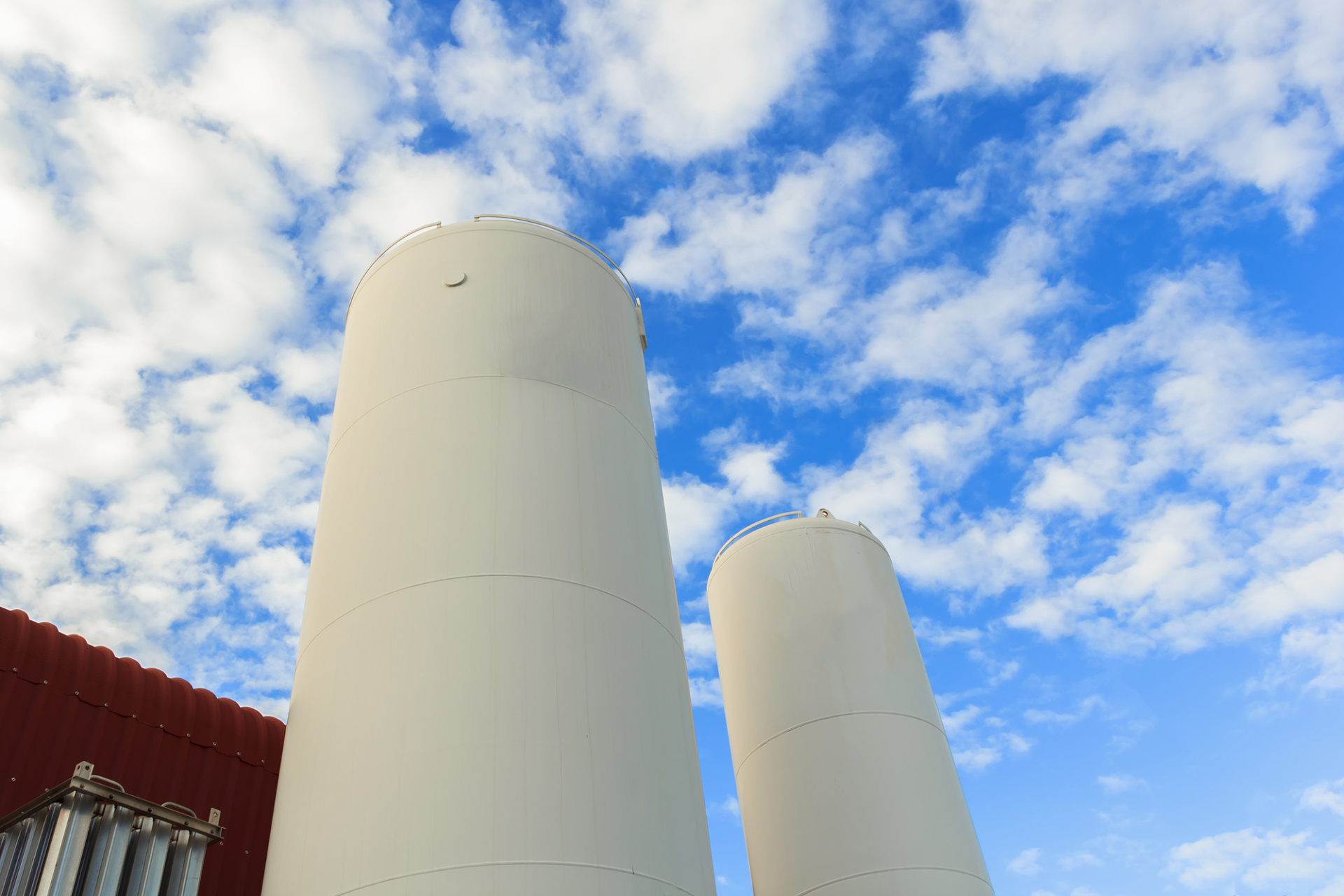Carbon Capture, Utilization and Storage (CCUS)
Carbon Capture, Utilization and Storage (CCUS) is one of few technologies enabling negative carbon emissions, and a necessary component of the sustainable energy systems of the future. Therefore, CCUS takes a central position in IFE’s research portfolio.
IFE carries out research along the full CCUS chain, addressing key aspects of CO2 Capture, Transport, Storage, and Utilization, within national and international projects and collaborations. Furthermore, IFE hosts three laboratories that are part of the ECCSEL European CCS Research Infrastructure, as well as other relevant facilities.
Capture
CCUS begins with the Capturing of the CO2 produced during an industrial process. Within the field of CO2-capture, IFE specializes in chemical looping within post-combustion, pre-combustion and oxy-fuel technologies, including hydrogen production by Sorption-Enhanced Reforming (SER).
Current projects:
MEMBER: Continued development of IFE’s synthetic sorbent (HTSORB), and upscaling of its production. Additionally, a new fluidizable catalyst will be developed for SER, and palladium-silver hydrogen membranes will be implemented in the SER reactor. The SER TRL will be raised 6.
Within FME Bi04Fuels, IFE will further develop the SER process for hydrogen production from desulfurized biogas, and other organic feedstocks.
TechnoSER aims to develop an improved and optimized SER-process for cost-efficient hydrogen production with integrated CO2 capture focused on the main challenges for taking the technology to commercial use.
CONVERGE aims to develop new sorbent-catalyst formulations for SER from biomass gassification syngas. Also addressed is the utilization of the formed CO2 and H2 to produce methane.
AlSiCal will further develop the patented Aranda-Mastin technology, enabling the co-production of alumina, silica, and calcium carbonate from abundantly available anorthosite and CO2, and evaluate the integration of CO2 capture into the process.
Recently completed projects:
ASCENT compared the performances of the three different CO2 capture technologies for hydrogen plants and hydrogen/power co-generation plants: Calcium-Copper cycle (Ca-Cu); Sorption-Enhanced Reforming (SER) with either indirectly heated calciner or oxy-fuel calciner; and C-Shift process in hydrogen production.
MigMin investigated the use of (ultra)mafic mineral dusts, produced during mining activities, as replacements for agricultural lime, to mitigate soil acidification.
6Cs studied the integration of hydrogen production and CO2 capture into a single reactor, using the calcium-copper looping technology.
Transport
During CO2 transport through pipelines, or in tanks on ships, trucks or trains, it is important to ensure flow and prevent corrosion. IFE’s research is focused on multiphase flow during transport through pipelines and loading/unloading of tanks; and corrosion effects of common impurities.
Current projects:
The Kjeller Dense-phase CO2 project (KDC-III) continues from KDC-II, investigating the effects of combined impurities in a CO2-stream on the corrosion of different steel types used for CO2 transport.
CO2Fact2 provides empirical data and models for flow assurance in CO2 transport, taking into account shutdowns, restarts, and blowouts with impure CO2 streams.
CCS ISO development
Recently completed projects:
Within ALIGN-CCUS, IFE’s Corrosion Lab investigated impurity reactions and the formation of corrosive phases in CO2 streams under pipeline and ship transport conditions.
The Kjeller Dense-phase CO2 project (KDC-II) investigated the effects of combined impurities in a CO2-stream on the corrosion of different steel types used for CO2 transport.
The focus of CO2WELLMAT was on determining maximum limits for the O2 content of CO2, under conditions relevant for the Northern Lights CCS project.
SUBCOMP
Storage
CO2 can be stored in aquifers, (depleted) hydrocarbon reservoirs, or other geological bodies including magmatic rocks. IFE performs experimental and modeling research addressing all relevant physical and chemical effects on reservoir, caprock, and seals.
Current projects:
CEMENTEGRITY will work on the development and testing of novel cement designs for enhanced CCS well integrity. The ACT-funded project will be coordinated by IFE’s Reservoir department, while within the project, IFE’s Corrosion department will study the effects of H2S and other impurities on seal integrity.
SFI SWIPA will build scientific understanding of permanent well barriers, in order to improve methods for well plugging.
CO2Paths models leakage from reservoirs through vertical structures called chimneys. While these structures may have formed as a result of high overpressure in the past, models will be built to determine how leaky these structures are today.
Recently completed projects:
Within the FME SUCCESS, IFE performed research on caprock integrity and potential leakage mechanisms.
PROTECT studied the geomechanical response of the caprock resulting from pressure build-up in the reservoir during CO2-injection, and potential resulting leakage mechanisms.
MigMin investigated the use of (ultra)mafic mineral dusts, produced during mining activities, as replacements for agricultural lime, to mitigate soil acidification.
StressLess developed numerical models for simulating the microseismicity generated by fracking and reservoir operations.
CLAYCAP studied the capture and retention of CO2 by synthetic, smectite-like clays, for applications such as capturing post combustion CO2 from industrial processes and power production.
Utilization
Captured CO2 may be used in a wide range of industrial processes, such as the production of C-based chemicals and fuels for hard to decarbonize applications; or mineral processing to produce metals and carbonate minerals.
Current projects:
AlSiCal will further develop the patented Aranda-Mastin technology, enabling the co-production of alumina, silica, and calcium carbonate from abundantly available anorthosite and CO2, and evaluate the integration of CO2 capture into the process.
CONVERGE aims to develop new sorbent-catalyst formulations for SER from biomass gassification syngas. The project also addresses the utilization of the formed CO2 and H2 to produce methane.
InsPiRe develops innovative technologies for the production of NPK fertilizers, to enable the use of alternative feedstock materials, and lower environmental impact. The possibilities for utilization of CO2 are also explored.
Recently completed projects:
NPK-Yara was the predecessor to the current InsPiRe project, studying NPK fertilizer production with CO2 utilization.
Laboratories and facilities
IFE’s Porous Flow Laboratory is equipped to study and simulate both physical and chemical aspects of fluid flow through rocks and rock-like materials, including cements and other sealants, under pressure and temperature conditions ranging from those encountered at the surface to realistic reservoir depths.
IFE’s Geochemistry Laboratory is a part of the European ECCSEL infrastructure. It specializes at chemical and isotope analysis in a wide range of matrices, to solve geological problems.
IFE’s Corrosion Laboratory uses flow loops and autoclaves with a high-precision impurity dosing system to study corrosion processes caused by exposure to dense-phase CO2 (up to 10 MPa CO2) under realistic conditions encountered along the CCS chain.
IFE’s CO2 flow loop is a closed loop designed to study situations where the CO2 in transport pipelines (CCS) will enter the two-phase vapour-liquid region. The facility has 150 barA pressure rating and temperature control from -50 to +50 deg C.
Capture/Utilization facilities

